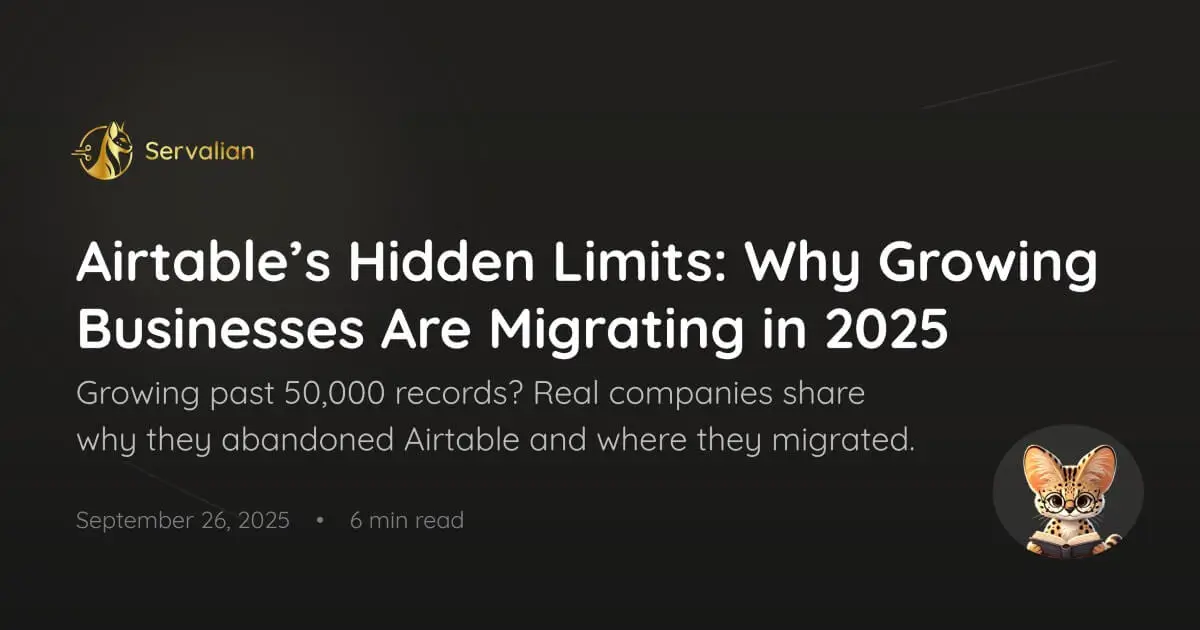
When Your Growing Business Hits Airtable's 50,000 Record Wall
September 26, 2025 • 6 min read
When organizations implement new form solutions, they often face a puzzling problem: despite spending significant time and resources on a centralized system, employees continue using their own spreadsheets, docs, and ad-hoc methods.
This "form fatigue" isn't just frustrating; it creates serious security vulnerabilities and data fragmentation.
Let's explore why this happens and how to build solutions people actually want to use.
When employees store sensitive information in personal spreadsheets or unsanctioned cloud apps, they create security blind spots.
Customer data, internal metrics, and proprietary information end up scattered across dozens of unmonitored locations—precisely what your security team works to prevent.
These workarounds might seem efficient to individual employees, but they create massive inefficiencies organization-wide:
Employees aren't intentionally sabotaging your data strategy. They're simply following the path of least resistance.
When official solutions feel cumbersome compared to a quick spreadsheet, the spreadsheet wins every time.
Your employees use intuitive, well-designed apps in their personal lives. When workplace tools feel clunky by comparison, adoption suffers.
Enterprise solutions aren't competing with other enterprise tools. They're competing with the simplicity of consumer applications.
Solutions imposed from above without stakeholder input almost always face resistance.
When teams aren't consulted, they don't feel ownership of the new process, regardless of its technical merits.
Successful enterprise forms don't just check technical boxes; they genuinely make employees' lives easier:
The most successful enterprise solutions integrate with existing workflows:
Instead of focusing solely on adoption rates, measure the actual outcomes:
Perhaps most importantly for enterprise environments, well-designed forms make security compliance the default choice, not an extra burden:
The most successful enterprise form strategies don't fight against human nature; they work with it.
By understanding why employees create workarounds and addressing those root causes, organizations can build solutions that achieve both technical requirements and actual adoption.
Remember: the goal isn't forcing compliance. It's creating systems so intuitive and helpful that workarounds simply aren't worth the effort.
Subscribe to our newsletter to receive the latest news from SaaS, tips, tricks and insights directly to your inbox.
